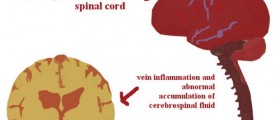What Should be Known about Chlorine Rash?
As its name suggests, chlorine rash is a kind of skin condition that is caused because of exposure to chlorine. Since chlorine can eliminate bacteria, it has to be used in swimming pools, which is why this skin condition is also known as swimming pool rash.
However, in most cases, exposure to normal amounts of chlorine will not cause the rash; unless the person is allergic to chlorine, the rash will happen only when the person comes into contact with the water in which the levels of this chemical are increased. This means that the rash in question is most likely to occur when there is too much chlorine in the water, which is why it is important not to exceed the limits that are permitted.

It is important to know, particularly by those who are allergic to chlorine, that besides swimming pools; water in hot tubs and water parks is also chlorinated. As for the symptoms that indicate chlorine rash, they are similar to the symptoms of any other rash and consist of itching, redness, and swelling of the affected area, although it is not uncommon that small bumps (which sometimes even tend to form patches) occur, or that swelling and redness are accompanied by pain.
- Six week-old female BALB/c mice were sensitized and challenged with OVA in the presence and absence of chronic low dose chlorine exposure of naturally vaporized gas of 5% sodium hypochlorite solution. Airway inflammation and AHR were evaluated by bronchoalveolar lavage (BAL) cell recovery and non-invasive phlethysmography, respectively.
- Real-time qPCR, Western blot assay, and ELISA were used to evaluate the mRNA and protein expressions of cytokines and other inflammatory mediators. Human A549 and murine epithelial (A549 and MLE12) and macrophage (AMJ2-C11) cells were used to define the responses to low dose chlorine exposure in vitro.
- Chronic low dose chlorine exposure significantly augmented airway inflammation and AHR in OVA-sensitized and challenged mice. The expression of Th2 cytokines IL-4 and IL-5 and proinflammatory cytokine IL-1? and IL-33 were significantly increased in OVA/Cl group compared with OVA group. The chlorine exposure also activates the major molecules associated with inflammasome pathway in the macrophages with increased expression of epithelial alarmins IL-33 and TSLP in vitro.
How Can It Be Treated?
First of all, this rash can easily be prevented, and it is done either by checking the levels of chlorine in swimming pools (which is the information that can be obtained from the managers or keepers) or by showering and changing the swimsuit after swimming. Dry skin is much more susceptible to allergic reactions to chlorine, which is why it should be moisturized and hydrated regularly. It is as simple as that.
As for the treatment of the condition in question, it is mostly based on the treatment of the symptoms, because it is necessary to relieve the itching and pain, if present. It is not necessary to visit the doctor right away, because some creams and ointments can be bought without a prescription, and they usually contain corticosteroids. The irritated areas should be kept dry and clean, and the rash should go away on its own after a few days. However, if it does not happen, or if the symptoms aggravate and the rash starts to spread, it is necessary to visit a doctor or dermatologist.






-Causes,-Symptoms-And-Diagnosis_f_280x120.jpg)










Your thoughts on this
Loading...